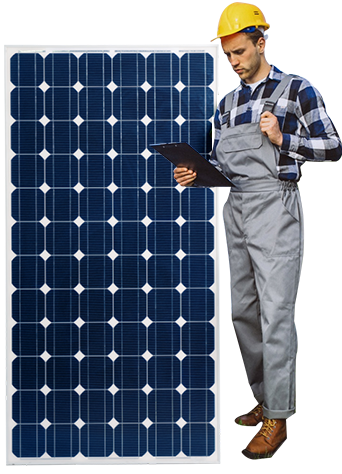- contact@zappysolar.com
- 813 586 4288
Solar is cheaper than your electricity bill
- Satisfaction Value provide for Money Solutions.
- Protective Business Accounting Management.
- Inventory Management Tracking System.
- We have be maintaining the plant with trees.

How Much Can You Save with Solar Panels in Florida?
Based on our data, the average homeowner in Florida is estimated to save $20,102 over 25 years.2 See how much a solar panel system will cost you and how much you will save

How Much Do Solar Panels Cost in Florida?
Florida is called the Sunshine State for a reason—it consistently ranks as one of the top states for solar in the country with the 6th most residential solar installations!
The exact cost and savings of your system may vary depending on several factors, including:
- The size of your system
- Your current energy usage
- Your current electricity rates
- Any incentives in your area
- The size and layout of your roof
- Preference of loan or cash financing
4 Reasons Why It’s Worth Going Solar in Florida
Mitigate Outages
Add battery storage to your solar system and rely on clean energy if and when outages roll through.
Count On Savings
The sun is relentlessly shining energy upon us. Solar panels take advantage of this by providing you with consistent, reliable power.
Lower Your Footprint
Unlike fossil fuels, solar energy is both clean and renewable—a better solution for your home, your community, and the environment.
Increase Home Value
Planning to sell? Solar-powered homes have been shown to stand out, earn more, and sell faster in the national real estate market.
Learn How Solar Works in Florida
Florida is one of the fastest-growing solar markets. If you’re thinking about going solar in Florida, now is the time to do it. Here’s how it works: Homeowners who install solar panel systems utilize net metering. Net energy metering allows you to earn credits toward your utility bill for the excess electricity your PV system generates and sends to the electric grid. These credits can be used to offset retail electricity purchased during other time periods, like at night.
In Florida, the majority of residents receive electricity from investor-owned utilities. These utility companies are required by state regulations to offer 1-to-1 net metering credits meaning the credit is the same value the utility charges you.
Many Florida residents are considering battery storage with their solar systems to provide emergency backup power during storms. During grid outages, solar systems paired with storage, will power the home’s critical loads with solar during the day and any excess electricity will be stored in the battery for use at night.
Available Solar Incentives in Florida
Solar costs, but thankfully there are several financial incentives for Floridians looking to invest in solar power. Those most well-known include:
- The Federal ITC: Most solar energy installations are eligible for the federal tax credit—formally known as the Solar Investment Tax Credit (ITC), which allows you to deduct up to 26% of your solar system’s installation costs from your total tax liability for the year of purchase.
- State Property Tax Exemption: Solar has been shown to increase the value of your home. Florida exempts this addition from your property taxes, meaning you don’t pay extra taxes because you got solar panels.
- Local Utility Rebates: Some local electric cooperatives and municipal utilities may offer solar rebate programs to offset the cost of your renewable energy system even further.
- Sales Tax Exemption: Solar is exempt from Florida’s sales tax
FAQs
Zappy Solar will manage the solar interconnection application process with your utility. Once the system is installed, we will submit the required documentation and pay any fees. Your utility will grant Permission to Operate (PTO) your solar system, and enable net metering credits on your bill. Florida utilities require system sizes over 11.76 kW DC to provide proof of homeowner’s insurance over $1 million
Net metering, or net energy metering (NEM) is a billing mechanism that enables you to send extra solar energy your solar panels generate beyond what your home can consume at the moment back into the electric grid. In return, you earn credit that you can use to offset the cost of electricity you pull from the grid in the future. The value of the credit depends on how electricity rates and net metering policies are structured in your utility.
The 4 largest utilities are investor-owned and are required by state regulations to offer 1 to 1 kWh credits for extra solar sent to the grid meaning the credit is the same value as the rate the utility charges you.
- Florida Power & Light (FPL)
- Duke Energy
- Tampa Electric (TECO)
- Gulf Power
Municipal utilities and electric cooperatives are not governed by the same law, but many offer fair net metering credits. Palmetto works with the four large utilities above, the following local utilities, and plans to operate in more soon:
- Orlando Utility Commission (OUC)
- Kissimmee Utility Authority (KUA)
- Lee County Electric Cooperative (LCEC)
- Seco Energy
- Clay Electric Cooperative
- Peace River Electric Cooperative (PRECO)
The first solar cells were manufactured by Bell Laboratories in the late 1950s and are still functional today. Likewise, panels installed on homes in the 1970s and ’80s continue to generate power. Most solar modules today have a 25-year power output warranty and may continue to produce power well beyond that point. Homeowners interested in additional protection and savings can enroll in Palmetto Protect and earn quick access to energy monitoring, dedicated customer support, exclusive discounts, and best-in-class maintenance services.
You’re right, solar energy can feel very complex, especially if you’re researching providers, technologies, incentives, municipal requirements, permits, the list goes on. That’s why zappy solar created end-to-end solar energy solutions allowing you to plug into savings with less time and no hassle. From financing and design to installation, production monitoring, and maintenance, our dedicated Customer Experience Team is here to answer questions, address concerns, and guide you through every step of the process. Visit our product pages to learn more about zappysolar solar and storage solutions.
Before designing your custom solar solution, we’ll take a detailed survey of your property and assess the solar energy potential of your roof. Beyond the size, angle, and orientation of your roof, we’ll look at shading, estimated tree growth, materials, ventilation and drain pipes, and the overall condition. Because solar panel arrays can last 25-30 years without the need for repair or replacement, it’s important the roof beneath is in good shape. In some cases, it may be advisable to have your roof repaired or replaced entirely before the installation of solar panels can begin.
That depends on your overall household energy usage relative to the total capacity of your solar array. Many homeowners desire a system size producing 100% of their energy usage needs, but they may not always be possible. Alternatively, if you plan to change your behavior, such as by purchasing an electric vehicle, you may wish to go a little larger than historical usage.
The cost of your solar power system will vary based on a number of factors including your location, the size of your solar array, installation fees in your area, and if you desire energy storage for backup power. That said, solar technologies have never been more efficient or affordable.
Solar panels come with a 25 year manufacturer warranty that covers product and performance. These vary by manufacturer. Homeowners interested in additional protection and savings can enroll in Palmetto Protect and earn quick access to energy monitoring, dedicated customer support, exclusive discounts, and best-in-class maintenance services.
Your home will still be connected to the electric grid so you have power when your system is not producing. Excess energy produced beyond what your home is using at any moment can flow back into the grid, and will earn you credit on your electricity bill. If you choose to integrate energy storage with your solar power system, any excess energy that is produced and not immediately used by your household will function to charge your battery. This, in turn, allows you to access stored solar power for your home when energy usage exceeds production, and provide valuable backup power during an outage.
Yes, almost all solar customers maintain a connection to the grid, even those with battery storage, which means you will still receive an electricity bill, though you can dramatically reduce the amount you pay each month thanks to the energy produced by your solar panels.
If you add a home battery to your solar power system, you can avoid disruptions caused by grid outages. The amount of energy available for you to use in case of an outage will depend on several factors:
- The size and production of your solar panels
- The size of the battery system
- The battery state of charge when the outage occurs
- The areas or appliances in your home that are prioritized to receive power when the grid goes down.
If, however, your solar energy system does not include a home battery, then yes, your power will go out. In the event of an outage, all standalone solar energy systems will automatically shut down in accordance with electric codes and mandatory inverter specifications.

